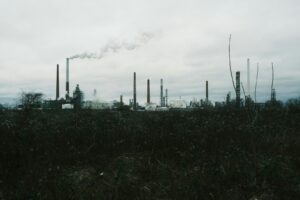Wealthy nations have done very little to tackle the harmful emissions that cause the majority of natural disasters, according to a report published by the UN Office on Disaster Risk Reduction (UNDRR).
According to the report, there were 7,348 disaster events recorded worldwide during the last two decades.
Approximately 1.23 million people died and these two decades of disasters caused $2.97 trillion in losses to the global economy.
In comparison, the previous 20 year period (1980 – 1999) saw 4,212 reported disasters from natural hazards, with 1.19 million deaths and economic losses of $1.63 trillion.
Although better recording and reporting of disasters may help to explain some of the increase in the last two decades, the researchers have insisted that the rise in emergences was due to the climate crisis.
The report says: ‘This is clear evidence that in a world where the global average temperature in 2019 was 1.1 degrees Celsius above the pre-industrial period, the impacts are being felt in the increased frequency of extreme weather events including heatwaves, droughts, flooding, winter storms, hurricanes and wildfires.’
The report also highlights how the COVID-19 pandemic has highlighted many shortcomings in our disaster risk management – including poverty, climate change, air pollution, uncontrolled urbanisation and biodiversity loss.
Currently, the world is on track for a temperature increase of 3.2 degrees Celcius or more, unless industrialised nations can deliver reductions in greenhouse gas emissions of at least 7.2% annually over the next 10 years in order to achieve the 1.5-degree target.
Mami Mizutori, UNDRR chief and special representative of the secretary-general for disaster risk reduction said: ‘Despite the fact that extreme weather events have become so regular in last 20 years, only 93 countries have implemented disaster risk strategies at a national level ahead of the end-of-year deadline.
‘Disaster risk governance depends on political leadership above all, and delivery on the promises made when the Paris agreement and the Sendai Framework for Disaster Risk Reduction were adopted.
‘But the sad fact is that we are willfully destructive. And that is the conclusion of this report; COVID-19 is but the latest proof that politicians and business leaders have yet to tune in to the world around them.’
Photo Credit – Pixabay

















hmm